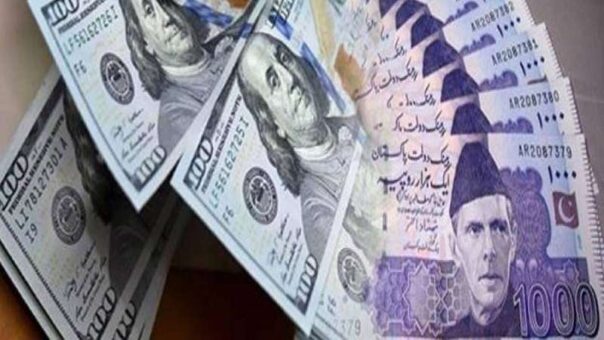Islamabad, June 8, 2023 – The recently released Pakistan Economic Survey 2022-23 highlights that exchange rate fluctuations have contributed to an increase of approximately Rs6.8 trillion in the country’s external debt.
The survey explains that external loans are obtained in various currencies, but they are effectively converted into Pakistani Rupee (PKR) upon disbursement. As PKR is not an internationally traded currency, other currencies are bought and sold through the US Dollar exchange.
Consequently, the exposure of foreign debt arises from two sources: US Dollar and other foreign currencies, as well as PKR against the US Dollar. Movements in international currencies, in which the debt is contracted, and fluctuations in the PKR/USD exchange rate can impact the value of external debt in US Dollar and PKR terms, respectively. It should be noted that domestic debt, denominated in PKR, does not carry currency risk.
During the first nine months of the current fiscal year, several factors influenced the movement in the external public debt stock, including the following:
Revaluation losses in US Dollar terms due to the depreciation of the US Dollar against other international currencies increased the external public debt stock by approximately US$470 million. The depreciation of the US Dollar against the Euro by 4 percent, the Japanese Yen by 2 percent, the Pound Sterling by 2 percent, and the Special Drawing Right (SDR) by 1 percent contributed to this increase.
The aforementioned translational loss resulting from the depreciation of the US Dollar against other international currencies added to the depreciation of the PKR against the US Dollar by approximately 39 percent. This depreciation led to an increase of around Rs6.8 trillion in the Rupee value of external debt.
READ MORE: Pakistan Economic Survey 2022-23 Reveals Volatility in Stock Market due to Uncertainties
The survey emphasizes the government’s commitment to reducing the debt burden to a sustainable level. The strategy includes running primary budget surpluses, maintaining low and stable inflation, promoting measures that support long-term economic growth, and following an exchange rate regime based on economic fundamentals.
Furthermore, the government aims to ensure fiscal discipline through revenue mobilization and expenditure rationalization, while maintaining debt sustainability over the medium term. With a narrower fiscal deficit, public debt is projected to follow a downward trajectory, and the government’s efforts to improve the maturity structure and expand the debt instruments base will facilitate efficient financing requirements.
In conclusion, the Pakistan Economic Survey 2022-23 highlights that exchange rate fluctuations have contributed to an increase of Rs6.8 trillion in external debt. The government remains committed to implementing strategies to reduce the debt burden, maintain fiscal discipline, and promote sustainable economic growth.
